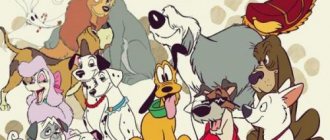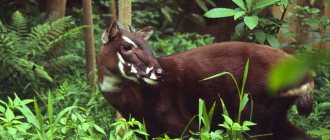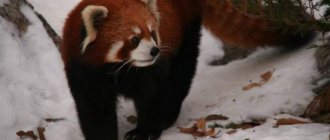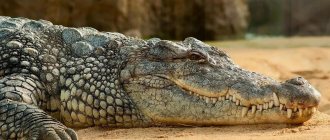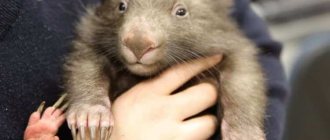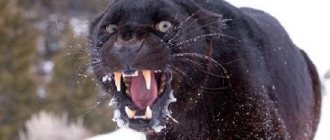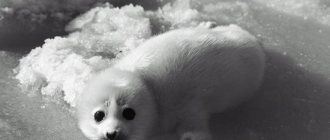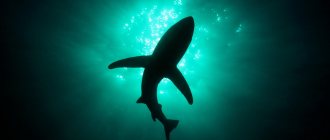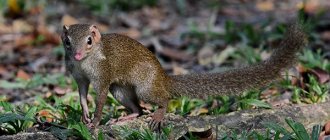Definition of animal life
The concept of animals includes the totality of all multicellular, eukaryotic organisms of the Animal Kingdom living on our planet.
The animal world includes both wild and domesticated animals. Man is also in the natural taxonomy of fauna. Animals can be divided into vertebrates and invertebrates. Vertebrates have a vertebra or spinal column, and they number less than 3% of all described faunal species. They include: fish, amphibians, reptiles, birds and mammals. The remaining animals are invertebrates, which are characterized by the absence of a backbone. These include: shellfish (mussels, oysters, octopus, squid, snails); arthropods (centipedes, insects, spiders, scorpions, crabs, lobsters, shrimp); annelids (earthworms, leeches), nematodes, flatworms (tapeworms), cnidarians (jellyfish, sea anemones, corals), ctenophores and sponges. The study of animals is a science called zoology.
Looking for food
Because animals feed on other organisms or their organic waste products, they must move around in search of food. For movement, animals have special adaptations, for example, pseudopods in amoebas, flagella in flagellates, cilia in ciliates and free-living flatworms, legs in mollusks, wings and legs in insects, limbs in amphibians, reptiles and mammals. And birds, along with their limbs, have two wings.
Example of a food chain
Evolution of the animal world
Main article: Animal evolution
Animal evolution is defined as: the gradual process by which a living organism becomes more complex (changes into a more complex or better form) in response to changes in its environment. The theory of animal evolution is currently the most popular concept of how the animal kingdom reached its current state.
In fact, the evolution of animals is accompanied by many contradictions and has several important components: natural selection, macroevolution and microevolution.
Natural selection is the mechanism that drives evolution. It forces animals to adapt to environmental changes. Some evidence of natural selection has been seen in the nature of the world, but not to a degree that would change the species in any meaningful way. Every genetic mutation that science has observed, including changes in the form or function of an organism, has resulted in decreased fitness in certain environments or even death. This means that the ecosystem is vulnerable to rapid change, since organisms that cannot adapt usually die.
Nobody questions the existence of microevolution. Wolves, coyotes, dingoes, jackals, foxes and hundreds of different breeds of dogs are known to have had a common ancestor. These are variations among different species within the same canid family, rather than upward evolution from a simple to a complex organism, as Darwin's theory of evolution suggests. Change is always in a downward trend and is limited by the genetic code (dogs do not grow wings or learn to fly). No new genetic information is added, it is always lost: the original canid ancestor had all the characteristics of the various descendants, while the descendants themselves lost the same potential. Canids split into many species, which in turn became isolated gene pools.
While microevolution is well observed and documented, macroevolution is highly controversial. Macroevolution is the transition from one animal species to another. It involves large or important changes in the body's major functions. This cannot happen during the life of a single organism, but is the result of a series of genetic mutations. Every genetic mutation associated with a form or a specific function observed in laboratories was either fatal (crippling) or self-reversing. Macroevolution is the evolutionist explanation of how the billions of different species on Earth came to be—variation from one species to another.
Evolution as a basic mechanism of biology has some serious shortcomings. The vast majority of animals are forced to suffer rather than benefit from mutations. The balance of the earth's ecosystems, including the relationships between animal species, is almost impossible to explain under the ever-changing view of evolution. In fact, evolution is no different from other philosophical or religious views about the origin of life. It can be confirmed by some facts and refuted by others. There are gaps in the theory that are filled with “assumptions.”
Birds
Le peuple migrateur
- France, Germany, Switzerland, Spain, Italy, 2001.
- Documentary.
- Duration: 98 minutes.
- IMDb: 7.9.
The title of the film directed by Jacques Perrin literally translates as “Feathered Migration” or “Birds - a Wandering People”. The film is dedicated to the migration of different species and tells the story of the long and eventful journey of migratory birds from different parts of the planet.
Most of the film was shot in the air, very close to the birds. “The Birds” received the main French film award “Cesar” for editing, as well as many other prizes and nominations.
After the success of “The Birds,” it was decided to release another wonderful documentary work, “March of the Penguins” by Luc Jacquet, in Russian theaters under the title “Birds 2: Journey to the End of the World.” Although in fact the films have no relation to each other, even the directors are different.
Characteristics of animals
The fauna has several features that distinguish its representatives from other living beings. Animals are eukaryotic and multicellular, which separates them from bacteria and most protozoa. They are heterotrophs: as a rule, food digestion occurs in the gastrointestinal tract, and this feature is not found in plants and algae. In addition, they differ from plants, algae and fungi in the absence of rigid cell walls. All animals are mobile, at least at certain stages of life. In most species, embryos go through the blastula stage, which is unique to animals.
Further, the characteristics of the animals are described in more detail:
Multicellularity
Animals, by definition, are multicellular creatures, although the number of cells varies greatly between species. (For example, the roundworm Caenorhabditis elegans, which is widely used in biological experiments, consists of exactly 1031 cells, no more and no less, while humans are composed of trillions of cells). However, it is important to understand that animals are not the only multicellular organisms; this feature is also found in plants, fungi, and even some types of algae.
Structure of a eukaryotic cell
Perhaps the most important schism in the history of life on Earth is the differences observed between prokaryotic and eukaryotic cells. Prokaryotic organisms lack cell nuclei and any membrane-bound organelles, and are exclusively unicellular; for example, all bacteria are prokaryotes. In contrast, eukaryotic cells have well-defined nuclei and internal organelles (such as mitochondria), and are able to group together to form multicellular organisms. Although all animals are eukaryotes, not all eukaryotes are animals: this extremely diverse group also includes plants, fungi, and tiny marine protists.
Specialized fabrics
One of the most remarkable features of animals is their specialized tissues. They include: nervous, connective, muscle and epithelial tissues. More advanced organisms exhibit even more specific levels of differentiation; for example, the various organs of our body are made up of liver cells, pancreatic cells, and dozens of other varieties. (Exceptions are sponges, which are technically animals but have virtually no differentiated cells.)
Sexual reproduction
Most animals engage in sexual reproduction: two individuals share a specific set of genetically determined traits (determining sex) through which the individuals combine their genetic information and produce offspring that carry the DNA of both parents. (Exclusion warning: There are animals, including some species of sharks, that reproduce asexually.) The benefits of sexual reproduction are enormous from an evolutionary perspective: the ability to test different combinations of genomes allows animals to quickly adapt to new ecosystems, and hence there is disruption to competition with asexual organisms. Again, sexual reproduction is not limited to animals: this method is also found in various plants, fungi, and even some very promising bacteria!
Blastula stage of development
When a male's sperm meets a female's egg, the result is a single cell called a zygote; After the zygote goes through several rounds of division, the morula stage begins. Only true animals experience the next stage: the formation of a blastula, when a hollow ball of several cells appears surrounding an internal cavity of fluid. Once the cells are enclosed in the blastula, they begin to differentiate into different types of specialized tissues, as described above.
Motor skills (ability to move around)
Fish swim, birds fly, dogs run, snails and snakes crawl—all animals are capable of movement at some stage in their life cycle. This evolutionary innovation allows animals to more easily conquer new ecological niches, pursue prey, and evade predators. (Yes, some animals, such as sponges and corals, are virtually motionless when they are fully grown, but their larvae are able to move around before they take root on the seafloor.) This is one of the key features that distinguishes animals from plants.
Heterotrophy (ability to absorb food)
All living things require organic carbon for the functioning of basic life processes, including growth, development and reproduction. There are two ways to obtain carbon: from the environment (in the form of carbon dioxide, a freely available gas in the atmosphere) or by consuming other carbon-rich organisms. Living organisms that obtain carbon from the environment, such as plants, are called autotrophs, while animals obtain carbon by ingesting other living organisms and are called heterotrophs. However, representatives of the fauna are not the only heterotrophs in the world; they include: all fungi, many bacteria and even some plants, at least partially.
Perfect nervous system
Have you ever seen a magnolia bush with eyes or a talking mushroom? Of all the organisms on Earth, only mammals are advanced enough to have more or less acute senses, including vision, hearing, taste, smell, balance and touch (not to mention the echolocation of dolphins and bats, or the ability of some fish and sharks sense magnetic impulses in the water using their “lateral lines”). These senses, of course, entail the existence of at least a rudimentary nervous system (as in insects and starfish), and in the most advanced animals a fully developed brain - perhaps one of the key features that truly distinguishes animals from the rest of nature peace.
Size and habitat
Animals can range in size from microscopic, such as plankton, to gigantic, such as the blue whale. They inhabit virtually every habitat on the planet, from the poles to the tropics and from mountain peaks to the deep, dark ocean waters.
Awesomeworld.ru: the most interesting things about animals
The fauna of our planet is so large that we, of course, are unlikely to be able to tell you about absolutely all of its representatives. At the same time, on our website we have collected information about the most interesting and unique animals.
On our portal you can read about both the largest animal on our planet and the largest rodent in the world, whose size is significantly larger than an average-sized dog. You will also learn about the existence among mammals of those specimens that are capable, in defense, of poisoning their enemies if something threatens their life, and much more.
Classification of the animal world
In order for us to understand how all living organisms are related to each other, they were organized into different groups. The more features a group of animals shares, the more specific it is. Animals are given scientific names so that people around the world can identify them, no matter what language they speak (these names are traditionally represented in the Latin alphabet).
Kingdom
All living organisms are first placed into different kingdoms. There are five different kingdoms for classifying life on Earth: animals, plants, fungi, bacteria and protists (single-celled organisms).
Type
The animal kingdom is divided into 40 small groups known as phyla. Here the animals are grouped according to their main characteristics. Each animal typically falls into one of different types, which include:
- chordates (Chordata);
- arthropods (Arthropoda);
- shellfish (Mollusca);
- echinoderms (Echinodermata);
- cnidarians (Cnidaria);
- annelids (Annelida):
- sponges (Porifera), etc.
Class
The type is then divided into even smaller groups known as classes. For example, the phylum Chordata, a subphylum of vertebrates (Vertebrata), is divided into: mammals (Mammalia), ray-finned fish (Actinopterygii), cartilaginous fish (Chondrichthyes), birds (Aves), amphibians or amphibians (Amphibia), reptiles or reptiles ( Reptilia), etc.
Squad
Each class is again divided into small groups called squads. The class of mammals (Mammalia) is divided into different divisions including: carnivores (Carnivora), primates (Primate), artiodactyla (Artiodactyla), rodents (Rodentia), etc.
Family
Within each order there are different families of animals that share very similar traits. For example, the order Carnivora is divided into families that include: felines (Felidae), canines (Canidae), bears (Ursidae), martens (Mustelidae), etc.
Genus
Each animal family is then divided into small groups known as genera. Each genus contains animals that have very similar traits and are closely related. For example, the cat family (Felidae) includes genera such as: cats (Felis) (including domestic cats); panthers (Panthera) (tigers, leopards, jaguars and lions); pumas (jaguarundi and pumas), etc.
View
Each individual species in the genus is named after its individual features and characteristics. Animal names are used in Latin so that they can be understood throughout the world and consist of two words. The first word in the name of the animal will be the genus, and the second will be the specific species.
Example - Tiger
- Kingdom: Animalia;
- Phylum: Chordata;
- Class: Mammals (Mammalia);
- Order: Predators (Carnivora);
- Family: Felidae;
- Genus: Panthera;
- Species: Tiger ( Panthera tigris).
Crocodile tears or what is the crocodile crying about?
25 January40709interesting about animalscrocodilepredator
In the Russian language there is such a phrase as “crocodile tears”, which each of us has probably heard at least once. This phrase paints before us the image of a crocodile shedding tears and wiping them with a handkerchief. What does the expression “crocodile tears” mean? Do crocodiles really cry? Below you will find answers to all these questions.
Read more
How many species of animals are there on Earth?
Main article: Number of animal species on the planet
Our planet has become home to a huge number of fauna. However, it is quite difficult to accurately estimate the number of animals. This is due to the fact that not all groups of animals received enough attention. For example, birds are the most studied group, while nematodes are considered poorly studied. The size of individuals and habitat also affect the ability to study in detail.
According to researchers, there are from 3 to 30 million species of animals in the world, with about 97% being invertebrates (insects are the largest group of invertebrates), and 3% are vertebrates (the most famous of which are mammals, amphibians, reptiles, fish and birds).
Oceans
Oceans
- France, Switzerland, Spain, USA, UAE, 2009.
- Documentary.
- Duration: 104 minutes.
- IMDb: 7.8.
An epic film about underwater fauna from the authors of “The Birds” Jacques Clouzot and Jacques Perrin and with a voice-over by Pierce Brosnan invites the viewer not only to admire, but also to think about environmental problems. This stunningly shot film received the main French film award "Cesar" as the best documentary of the year.
Fauna of the continents
Animals of Australia
Main article: Fauna of Australia
Dingo
Australia is home to about 10% of our planet's biodiversity, making it one of the world's richest countries in both flora and fauna. Almost 80% of the mainland's animals are endemic, meaning they are found nowhere else in the world.
Animals of Asia
Main article: Fauna of Asia
black-backed tapir
Asia is the largest part of the world by area, containing various natural zones - from hot deserts to harsh arctic deserts. There are different conditions for the habitat of different species of animals, but they are subject to serious threats from humanity.
Animals of Antarctica
Main article: Fauna of Antarctica
Emperor penguin
Antarctica is the coldest and most inhospitable part of the world. However, even here you can meet representatives of the animal world, which in most cases are migratory, since living conditions here are difficult throughout the year.
Animals of Africa
Main article: Fauna of Africa
African elephant
Africa is a large continent through which the equator passes. It influences the diversity of flora and fauna. Many endemic species of mammals, reptiles, amphibians, birds and invertebrates can be found on the mainland.
Animals of Europe
Main article: Fauna of Europe
Brown bear
The fauna of Europe is not as rich as in other parts of the world. This is due to the fact that most of the continent lies in a temperate climate zone, which does not support significant biological diversity.
Animals of North America
Main article: Fauna of North America
Nine-banded armadillo
The continent of North America is located in the northern part of the Western Hemisphere. The continent's fauna, like its flora, has significant similarities with the biological resources of Europe. Nevertheless, there are certain differences and features of the animal world of North America that characterize the fauna of the continent.
Animals of South America
Main article: Fauna of South America
Giant anteater
The fauna of South America includes hundreds of thousands of species. This is due to the fact that the continent has different natural and climatic zones - from glaciers to deserts. Many representatives of the continent's fauna are endemic and are not found anywhere else in the world.
Representatives of forest-steppe and steppe
A variety of animals live in this area. This is a unique ecosystem, which is represented by brown hares and tolai hares, ground squirrels and hamsters (Djungarian and gray), marmots and voles, squirrels and jerboas, as well as other rodents. Predatory species include wolves and foxes. The steppe zone is home to many birds. These are the steppe harrier and bee-eater, bittern and hoopoe, skylark and roseate starling, bustard and steppe eagle, gray heron and quail, kestrel and gray partridge.
Tolai hare
Vole
Steppe Harrier
European bee-eater
Bittern
Pastor
Kestrel
Fauna of semi-deserts and deserts
The central part of Russia, located in Asia, is occupied by deserts; semi-deserts occasionally occur. The climate here is very hot, and there is either no precipitation at all or very little precipitation. In such conditions, it is difficult for animals to find food and water, and they also need to hide from the heat, so they mainly hunt at night, and during the day they stay in shelter and sleep.
Main desert animals:
Ferrets, voles, jerboas, ground squirrels, shrews.
Saiga antelope
Korsak
long eared hedgehog
This natural area is home to a very large number of birds. They appear here in spring and summer. Due to natural conditions, many of them build nests directly on the sand. Most birds have camouflage colors.
The role of the animal world
Main article: How do animals help people?
The importance of fauna in human life and nature is truly enormous. It's hard to imagine a world without animals. From dogs and cats to bees and butterflies, the Animal Kingdom contains millions of species. Even people belong to this group. The life of every living thing depends on some factors, and since animals form such a large group, their importance seems invaluable.
Ecological significance
Every form of life plays an important role in the ecological balance of the Earth. For example, carnivores are a natural way of controlling herbivore populations in forests and grasslands. If there were no predators, then the population of these artiodactyls could grow so much that they would destroy a significant area of forests and grasslands in an attempt to feed themselves. In the same way, scavengers clear the ground of decaying carcasses.
Economic significance
The silkworm is a phylum of arthropods in the Animal Kingdom. Silkworm silk (and in some cases man-made fibers) supports the silk industry, which has an annual commercial value of $200-500 million. The dairy, wool, leather and fishing industries not only provide employment to millions of people, but also satisfy a number of human needs.
The nutritional value
Meat is an important source of proteins, which are the building blocks of the cells of our body. Cow's milk is an important source of proteins, carbohydrates, fats, vitamins and minerals such as calcium, potassium and magnesium. Honey produced by bees not only has a pleasant taste, but also high nutritional value. It contains 80% carbohydrates, less than 20% water, and the rest consists of vitamins, minerals and trace elements.
Pollinators
Bees, bats and birds are important pollinators, responsible for pollinating approximately 35% of the crops that provide human food. Without these pollinators, the world's population would face severe food shortages.
Other uses
Medical research is one area in which animals play an important role. Dogs, monkeys and mice have been used as animal models in the discovery of insulin, polio and rabies vaccines. Cosmetics are also tested on certain animals before they are put on the market. This use of animals in research may seem cruel. However, animals have played an important role in the development of medicines and treatments for humans, and steps are being taken to stop deliberate cruelty towards our little brothers. Some animals also act as companions for people with disabilities. Dogs are high on the list of service animals for the blind, elderly, and physically challenged.
Land of the Bears
Terre des ours
- France, 2013.
- Documentary.
- Duration: 95 minutes.
- IMDb: 7.0.
A breathtakingly beautiful documentary film by French director Guillaume Vincent will introduce viewers to the beauty of the Kamchatka region, which is often called the land of bears. After hibernation, the majestic predators make a long journey from the high hills to the rivers where the salmon swim. There the bears will have to look for food all summer long before heading back to their den for another long sleep.
The film is definitely worth watching in the original with subtitles for the voice-over of French actress Marion Cotillard.
Wildlife protection
Animals in danger
About 100 years ago, most of the planet was inhabited by animals that had no contact with humans at all. However, with the advancement of technology and the ever-increasing need for raw materials such as wood, there are now few areas in the world that are inaccessible to humans. Due to the expansion of the human population, both the natural habitats of many animals and the wildlife themselves are disappearing. This problem has devastating consequences and many species of fauna are forced to rely on human help to survive. The human introduction of certain animal species into remote areas has a huge impact on the environment. In many parts of the world, the introduction of domestic animals such as cats, dogs and goats has a detrimental effect on local flora and fauna.
IUCN Red List
The International Union for Conservation of Nature and Natural Resources (IUCN) was founded by the UN in the 1940s to monitor the condition of all living organisms on Earth. Part of his work is to compile the Red List of Threatened Species, which draws on information submitted by thousands of scientists from around the world. Today, the Red List shows that endangered species are often found in the same corner of the world. Areas of Southeast Asia, East Africa and South America have suffered the most due to uncontrolled deforestation, which has led to a decline in the populations of numerous species of fauna.
Animal protection
Many species of animals around the world are subject to serious trapping and hunting. Governments are encouraged to engage in campaigns to ban hunting of certain species. Long drift nets have been used for mass fishing in the open ocean, but have resulted in the deaths of many other animals, including sea turtles, whales, seals and dolphins. To prevent this from happening, the United Nations has now banned the dumping of these nets into the ocean. In order to discourage the poaching of endangered animals (usually for their body parts), laws are now in place to prohibit the trade. Body parts of endangered animals such as elephants, tigers, rhinoceroses, seahorses, etc. are found in traditional medicine markets in the eastern countries of the world.
Habitat protection
Animals depend on their natural habitats for survival, including finding enough food and water. The best way to preserve the world's fauna is to protect habitats, as many animals today are becoming extinct due to habitat loss, including deforestation in forests, destruction of coral reefs and climate change leading to melting ice in the polar regions. A number of areas of jungle, wetlands and coastal areas have been designated as nature reserves to try to protect the species that live there.
Breeding in captivity
Captive breeding can be an effective way to restore endangered populations. Although breeding can be successful, it is not the best way to conserve certain species as it requires significant human resources. For breeding to be effective, it must occur naturally, without the direct help of people.
Call for help for animals
One of the biggest problems with conservation is that it is economically expensive. Many people are not interested in donating their money to something that does not bring immediate results. However, in many countries around the world, more and more people are starting to take care of animals from various organizations, however, unfortunately, not all species are able to generate positive emotions, so some representatives of the fauna end up receiving less help than others.
The importance of animals in nature and human life
Animals are of great importance in human life. Man by nature is also a representative of the animal world. People can live with them, be treated with their help, and eat animal products.
What is the significance of the animal and plant world in nature? There is an unspoken law of the cycle of life here, according to which the planet needs predators and prey, herbivores and carnivores. Animal remains are an indispensable fertilizer for plants. For example, lions eat antelopes, antelopes eat grass. When a lion dies, the remains of his body turn into humus and live on this grass. We must remember that in nature everything is interconnected. And a person, no matter how good his intentions may be, should not make his own adjustments to this connection.

